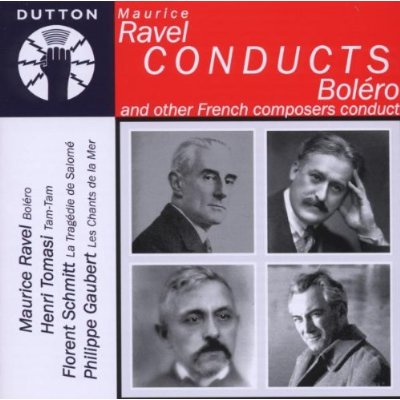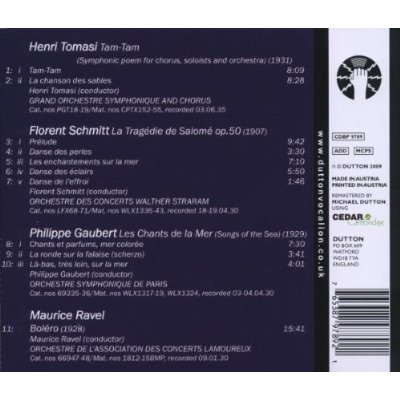Logowanie
Mikołaj - ten to ma gest!
Miles Davis, Horace Silver, Jay Jay Johnson, Percy Heath, Kenny Clarke, Lucky Thompson
Walkin'
20bit K2Super Coding - ale jak to brzmi!
Kasety magnetofonowe
Winylowy niezbędnik
ClearAudio
Double Matrix Professional - Sonic
najbardziej inteligentna i skuteczna pralka do płyt winylowych wszelkiego typu - całkowicie automatyczna
RAVEL, Tomasi, Schmitt, Gaubert
Ravel Conducts Bolero and Other French Composers Conduct

6. Le Tragédie de Salomé, ballet, Op. 50: 4. Danse des éclairs 7. Le Tragédie de Salomé, ballet, Op. 50: 5. Danse de l'effroi 8. Les chants de la mer, trois tableaux symphoniques: 1. Chants et parfums, mer colorée 9. Les chants de la mer, trois tableaux symphoniques: 2. La ronde sur la falaise (scherzo) 10. Les chants de la mer, trois tableaux symphoniques: 3. Là-bas, très loin, sur la mer 11. Boléro, ballet for orchestra
- RAVEL
- Tomasi, Schmitt, Gaubert
"This release marks a further instalment in Dutton’s ongoing series of composers conducting their own works. Ravel is heard conducting the Lamoureux Orchestra in his 1928 recording of Boléro. Written as a ballet for the Ida Rubinstein troupe, its impending popularity was clearly signalled by the fact that Ravel was present when Piero Coppola had recorded it, a session that took place the day before Ravel’s own recording – reissued here - and Ravel and his company had allowed Coppola’s recording to go ahead. In the early 1930s, Henri Tomasi was musical director and chief conductor of the French National Radio’s colonial network, reflecting his longstanding interest in various ethnic musics. Written for radio, Tomasi’s orchestral suite Tam-Tam was a great success in 1931. It is set on the Oubangui River , a tributary of the Congo , the border between French and Belgian Congo , and creates the impression of some exotic ceremony or ritual. A French composer of Alsatian descent, Florent Schmitt was widely influential, especially before the First World War. He travelled widely, which gave him a taste for the exotic that is evident in his ballet The Tragedy of Salomé. The work reflects the influence of Africa and the East on French artistic life after the 1889 Paris Exposition, and was first heard on 9 January 1911 at a Colonne Concert, when Pierné conducted. Probably best known as a flautist, Philippe Gaubert was a widely respected conductor between the wars as well as a prolific composer. After the First World War he became not only Professor of Flute at the Paris Conservatoire but also a conductor both of concerts and the Paris Opéra. His three symphonic poems Les Chants de la Mer appeared in October 1929 and were recorded by the composer soon after. The title and the fact that it is in three movements makes superficial comparisons with Debussy’s La Mer inevitable, but it is an enchanting work with a voice all of its own."































